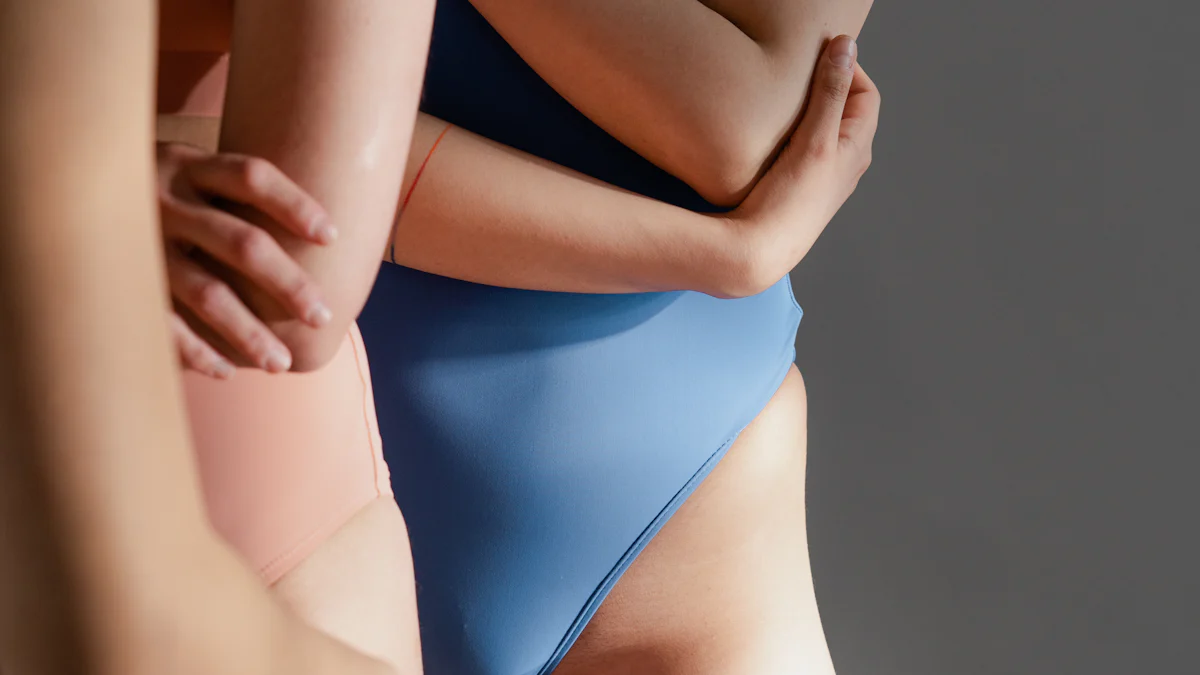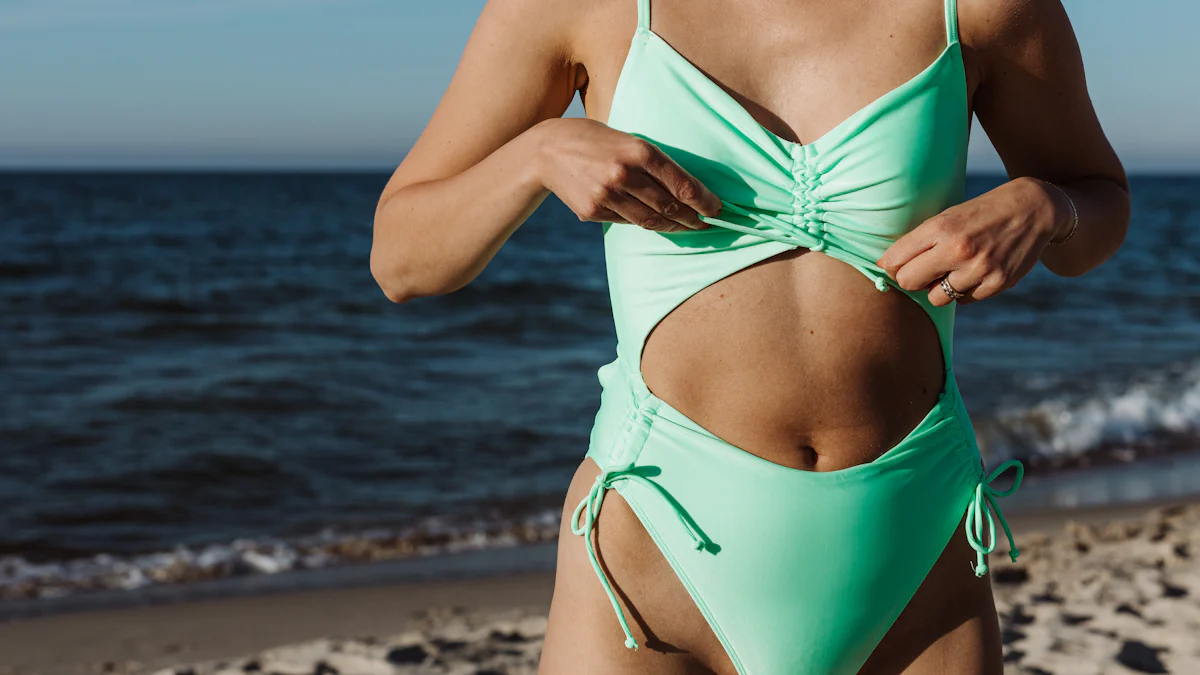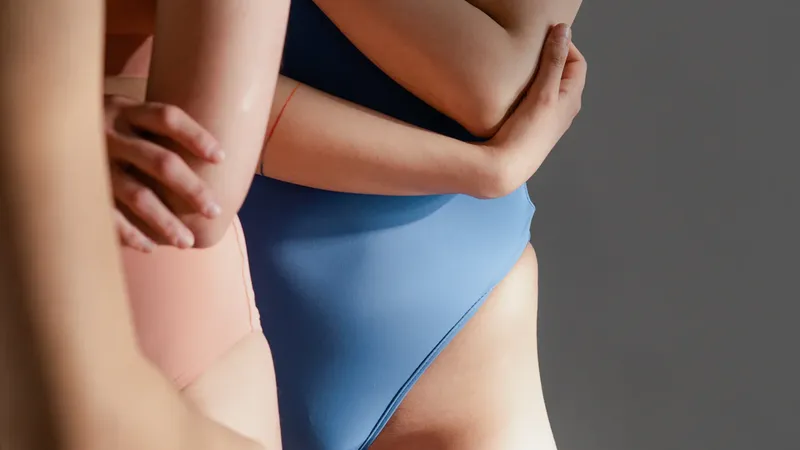
Starting a swimwear brand is an exciting opportunity to dive into a growing industry. The global swimwear market is booming, with its value expected to reach $28.29 billion by 2025 and grow to $38.53 billion by 2030. This growth is fueled by trends like sustainable materials, inclusive sizing, and the rise of online shopping. If you’ve ever dreamed of how to start a swimwear brand that creates stylish, functional swimwear that stands out, now is the perfect time to make it happen. With the right mix of creativity and strategy, you can turn your vision into a thriving business.
Key Takeaways
Find your target customers and focus on a specific group. Think about markets like eco-friendly or body-inclusive swimwear.
Make a clear business plan with your goals, budget, and research. This plan helps you make choices and attract investors.
Create special swimwear by studying trends and picking good fabrics. Test samples to make sure they are comfy and work well.
Pick the best manufacturer by looking at local and global options. Build good relationships by talking clearly and checking quality.
Sell your swimwear online and use social media to promote it. Work with influencers and join local events to get noticed.
Define Your Target Audience
Understanding your target audience is the foundation of building a successful swimwear brand. By narrowing down your focus, you can create designs that truly resonate with your customers.
Identify Your Niche
Research market trends and gaps in the swimwear industry.
The swimwear market is diverse, but not every niche is saturated. To stand out, you need to identify opportunities where demand exceeds supply. Here’s a quick look at some common niches and their unique appeal:
Swimwear Niche | Description |
|---|---|
Athleisure Swimwear | Combines functionality with style, featuring performance-oriented designs for active lifestyles. |
Sustainable Swimwear | Made from eco-friendly materials, catering to environmentally conscious consumers. |
Inclusive Swimwear | Offers extended size ranges and adjustable fits, promoting body positivity and diversity. |
Customizable Swimwear | Allows personalization through mix-and-match options, appealing to individual style preferences. |
Tech-Enabled Swimwear | Incorporates high-tech fabrics and features, targeting tech-savvy consumers. |
Take time to explore these niches. For example, sustainable swimwear is gaining traction as more people prioritize eco-friendly choices. Similarly, inclusive swimwear addresses the growing demand for body-positive designs. By focusing on an underserved niche, you can carve out a unique space in the market.
Choose a specific demographic (e.g., women, men, kids, plus-size, luxury, sustainable).
Once you’ve identified a niche, think about who your ideal customer is. Are you designing for women who love luxury beachwear? Or maybe kids who need playful, durable swimsuits? Defining your demographic helps you tailor your designs, marketing, and branding. For instance, if you’re targeting environmentally conscious buyers, sustainable materials and ethical production should be your top priorities.
Understand Customer Needs
Analyze customer preferences for style, fit, and functionality.
Customers want swimwear that looks good and feels great. Fashion trends play a huge role here. Bold patterns, vibrant colors, and flattering cuts often dominate the market. Social media platforms like Instagram and Pinterest also influence preferences, as customers look to influencers for inspiration. Beyond style, functionality matters too. Think about features like adjustable straps, quick-dry fabrics, or built-in UV protection.
Consider seasonal demand and regional preferences.
Swimwear sales are highly seasonal. In North America, demand peaks from June to August, while the Southern Hemisphere sees a surge from December to March. If you plan to sell globally, keep these trends in mind. Additionally, regional preferences can vary. For example, European customers often prioritize swimwear that aligns with their active lifestyles and wellness-focused culture. By understanding these patterns, you can better plan your inventory and marketing strategies.
By defining your target audience and understanding their needs, you’ll set a strong foundation for your swimwear brand. This step ensures your designs and marketing efforts align with what your customers truly want.
Create a Business Plan for Your Swimwear Brand
A solid business plan is your roadmap to success. It helps you stay focused, attract investors, and make informed decisions as you start a swimwear brand. Let’s break it down step by step.
Outline Your Goals and Vision
Define your short-term and long-term objectives.
Start by setting clear goals. What do you want to achieve in the first year? Maybe it’s launching your first collection or building a strong online presence. Long-term goals could include expanding into international markets or introducing new product lines. Write these down to keep yourself accountable.
Include your mission and vision statements.
Your mission statement explains why your brand exists. For example, you might aim to create stylish, sustainable swimwear that empowers people to feel confident. Your vision statement, on the other hand, describes where you see your brand in the future. Think big—this is your chance to dream!
Pro Tip: A strong mission and vision can inspire not only your team but also your customers.
Budget and Financial Planning
Estimate startup costs, including design, manufacturing, and marketing.
Starting a swimwear brand requires careful budgeting. Here’s a breakdown of typical costs:
Cost Category | Estimated Cost Range |
|---|---|
Lease or Purchase of Retail Space | |
Initial Inventory Purchase | $10,000 - $25,000 |
Branding and Marketing Costs | $5,000 - $15,000 |
Website Development and E-commerce Setup | $2,000 - $10,000 |
Licenses and Permits | $500 - $1,500 |
These numbers can vary depending on your location and business model. If you’re starting small, you might skip retail space and focus on e-commerce to save costs.
Plan for funding sources or initial investments.
You’ll need money to get started. Here are some common funding options:
Self-funding: Use your savings to maintain full control of your business.
Friends and Family: Borrow from people you trust.
Small Business Loans: Approach banks or lending institutions.
Grants: Look for non-repayable funds from organizations.
Crowdfunding: Raise money online from supporters who believe in your vision.
Choose the option that works best for your situation and aligns with your goals.
Research the Market and Competition
Identify competitors and analyze their strengths and weaknesses.
Understanding your competition is key. Big names like Speedo, Nike, and Victoria’s Secret dominate the market with strong branding and diverse products. However, smaller brands often shine by focusing on unique designs or niche markets. For example, Speedo excels in performance swimwear but has faced criticism for limited advertising in some regions. Use this knowledge to position your brand effectively.
Look for gaps and opportunities in the swimwear market.
The swimwear market is full of opportunities. Consumers are looking for innovative designs, sustainable materials, and customizable options. Emerging markets in Asia-Pacific and Latin America also offer growth potential. By addressing these gaps, you can create a brand that stands out.
Quick Tip: Focus on what makes your brand unique. Whether it’s eco-friendly fabrics or bold designs, highlight your strengths to attract customers.
By creating a detailed business plan, you’ll set yourself up for success. It’s the foundation you need to confidently start a swimwear brand and turn your vision into reality.
Design and Develop Your Swimwear

Designing your swimwear is where your creativity truly shines. This step is all about turning your ideas into tangible designs that reflect your brand’s identity.
Sketch and Finalize Designs
Create initial sketches or collaborate with a designer.
Start by sketching your ideas. If drawing isn’t your strength, work with a professional designer who can bring your vision to life. Focus on creating designs that align with your niche and target audience. For example, if you’re targeting eco-conscious buyers, think about minimalist designs that highlight sustainability.
Focus on unique features like cuts, patterns, and materials.
Swimwear trends are constantly evolving. Bold patterns like abstract art and tropical florals are making waves, while sustainable materials like Econyl and Repreve are becoming the norm. Unique cuts, such as '90s-inspired low-rise bottoms or swimsuits with shapewear elements, can set your brand apart. Don’t forget to consider functionality—features like adjustable straps or UV-protective fabrics can make your designs more appealing.
Choose Fabrics and Materials
Research fabric options for comfort, durability, and sustainability.
The fabric you choose can make or break your swimwear. Look for materials that are comfortable, durable, and eco-friendly. Options like Econyl (made from recycled nylon) and Repreve (crafted from plastic bottles) are both sustainable and high-performing. Other choices, like Vita PL, offer resistance to chlorine and sunscreen, ensuring your swimwear lasts longer.
Source high-quality materials from reliable suppliers.
When sourcing materials, you have two main options: working directly with factories or independently vetting suppliers. Factories often streamline the process, while independent sourcing gives you more control. Either way, prioritize quality. Consider factors like stretch, quick-drying properties, and elasticity to ensure your swimwear meets customer expectations.
Create Prototypes and Test
Work with a pattern maker to create samples.
Once your designs are ready, collaborate with a skilled pattern maker to create prototypes. These samples will help you visualize your swimwear and identify any design flaws. Use this stage to refine details like fit and stitching.
Test the fit, comfort, and functionality of your designs.
Testing is crucial. Conduct fit sessions with models to gather feedback on comfort and functionality. Use 3D modeling for virtual adjustments and physical samples for real-world testing. Go through multiple rounds of testing to perfect your designs. Pay attention to details like tightness, stretch, and overall comfort to ensure your swimwear performs well in different conditions.
By focusing on thoughtful design and rigorous testing, you’ll create swimwear that not only looks great but also meets the needs of your customers. This step is essential to successfully start a swimwear brand that stands out in a competitive market.
Find and Work with Manufacturers
Finding the right manufacturer is a critical step when you start a swimwear brand. Your choice will directly impact the quality, cost, and success of your products. Let’s break it down step by step.
Research and Select Manufacturers
Compare local and overseas manufacturers.
When choosing between local and overseas manufacturers, weigh the pros and cons carefully:
Local Manufacturers:
Easier communication and faster response times.
Better quality control and fewer risks of miscommunication.
Limited material options and higher production costs.
Overseas Manufacturers:
Cost-effective production and access to a wide variety of materials.
Ideal for large-scale production.
Challenges in communication, longer shipping times, and potential scams.
For example, Portugal is known for sustainable practices and smaller production runs, while China offers competitive pricing and high-volume capacity. Choose based on your budget and production needs.
Look for manufacturers with swimwear production expertise.
Not all manufacturers specialize in swimwear. Look for those with experience in sourcing high-performance fabrics, like quick-dry or UV-protective materials. They should also have strong production planning systems to ensure timely delivery. If sustainability is part of your brand, prioritize manufacturers with eco-friendly practices and ethical labor standards.
Request Samples and Negotiate Terms
Evaluate quality, pricing, and production timelines.
Before committing, request samples to assess the quality of their work. Check the stitching, fabric durability, and overall craftsmanship. Compare pricing and ensure it aligns with your budget. Also, confirm their production timelines to avoid delays during peak seasons.
Negotiate minimum order quantities (MOQs) and payment terms.
Manufacturers often require MOQs ranging from 100 to 100,000 units. If the MOQ feels too high, try these strategies:
Substitute expensive materials with cost-effective alternatives.
Partner with other brands to share production runs.
Focus on high-demand designs to encourage flexibility.
Split large orders into smaller shipments to manage inventory better.
Discuss payment terms upfront. Some manufacturers may offer discounts for bulk orders or flexible payment plans.
Build a Strong Partnership
Communicate expectations clearly and regularly.
Clear communication is the backbone of a successful partnership. Share your expectations about quality, timelines, and customization options. Regular updates on production progress can help you address issues before they escalate.
Monitor production quality and timelines.
Stay involved throughout the production process. Conduct quality checks at different stages to ensure standards are met. If possible, visit the factory or hire a third-party inspector to oversee production. This proactive approach will save you time and money in the long run.
Pro Tip: A strong partnership with your manufacturer can lead to better pricing, improved quality, and smoother operations. Treat them as a key part of your team.
By following these steps, you’ll find a manufacturer who aligns with your vision and helps you create swimwear that stands out in the market.
Set Up Sales Channels and Market Your Swimwear Brand

Once your swimwear designs are ready, it’s time to sell and promote them. Setting up effective sales channels and marketing strategies will help you reach your audience and grow your brand.
Build an Online Presence
Create an e-commerce website using platforms like Shopify or WooCommerce.
An e-commerce website is essential for selling swimwear online. Platforms like Shopify, WooCommerce, and BigCommerce make it easy to set up your store. Shopify is a favorite for its user-friendly interface and 24/7 support. WooCommerce works well if you already use WordPress. BigCommerce offers robust features without transaction fees. Choose a platform that fits your budget and technical skills.
Optimize your website for mobile users and SEO.
Most shoppers browse on their phones, so your website must be mobile-friendly. Use responsive design, fast-loading pages, and clear navigation. Optimize images and videos to reduce loading times. For SEO, focus on keywords, create engaging product descriptions, and add clear calls-to-action (CTAs). Don’t forget to compress files and enable browser caching for a smoother experience.
Tip: Make sure tap targets, like buttons, are at least 48x48 pixels for easy clicking on mobile devices.
Leverage Social Media Marketing
Share engaging content on Instagram, TikTok, and Pinterest.
Social media is a powerful tool for showcasing swimwear. Platforms like Instagram and TikTok are perfect for sharing vibrant photos, videos, and behind-the-scenes content. Pinterest works well for creating shoppable galleries. Post regularly and use trending hashtags to increase visibility. Highlight your swimwear’s unique features, like sustainable materials or bold patterns.
Collaborate with influencers to promote your brand.
Partnering with influencers can boost your brand’s credibility. Look for influencers who align with your niche. For example, Frankies Bikinis has successfully used influencer collaborations to expand its audience. Influencers can showcase your swimwear through curated posts, reels, or stories, helping you reach potential customers.
Explore Additional Sales Opportunities
Sell on marketplaces like Amazon or Etsy.
Marketplaces like Amazon and Etsy offer excellent opportunities to expand your reach. Swimwear is in high demand year-round, making it a profitable category. These platforms provide access to a global audience and tools to manage inventory and shipping. Use high-quality images and detailed descriptions to stand out.
Partner with local boutiques or host pop-up events.
Community engagement can boost your brand’s visibility. Partner with local boutiques to display your swimwear or organize pop-up events. Hosting workshops on swimwear styling or summer-themed parties can attract customers. Studies show that 68% of shoppers prefer supporting businesses involved in their community. These efforts build trust and loyalty.
By setting up strong sales channels and using creative marketing strategies, you’ll position your brand for success. Whether you focus on e-commerce, social media, or local events, these steps will help you start a swimwear brand that stands out.
Starting a swimwear brand is an exciting journey filled with creativity and challenges. You’ll face hurdles like intense competition, seasonal demand, and production issues, but each challenge has a solution. For example:
Challenge | Strategy to Overcome |
|---|---|
Intense Competition | Create a unique selling proposition (USP) |
Seasonal Demand | Stay adaptable to market trends |
Production Issues | Build strong relationships with manufacturers |
Success stories like Netta Ziv’s Naya Swimwear prove that determination and a clear vision can take you far. She started small, designing custom swimsuits for friends, and grew her brand internationally by focusing on sustainability and empowering women. Similarly, Travis built her swimwear company by addressing fit challenges and raised $8.5 million in funding.
Now it’s your turn. Take the first step, follow these strategies, and bring your vision to life. The swimwear market is waiting for your unique touch!
FAQ
What’s the best way to start a swimwear brand with a small budget?
Start small by focusing on e-commerce. Use platforms like Shopify to avoid retail space costs. Partner with a manufacturer offering low MOQs. Prioritize one or two designs to minimize inventory expenses. Crowdfunding can also help you raise funds while building brand awareness.
How do I choose the right fabrics for my swimwear?
Look for fabrics that are durable, stretchy, and quick-drying. Materials like Econyl or Repreve are great for sustainability. Test samples for comfort and elasticity. If you’re unsure, ask your manufacturer for recommendations based on your design needs.
How long does it take to launch a swimwear brand?
It usually takes 6-12 months. This includes time for designing, prototyping, manufacturing, and setting up sales channels. The timeline depends on factors like your production speed and marketing strategy. Start planning early to avoid delays.
Do I need a professional designer to create my swimwear?
Not necessarily. If you have design skills, you can sketch your ideas. Otherwise, hire a freelance designer or use design software. Collaborating with a professional ensures your designs are production-ready and align with your brand vision.
How can I stand out in the competitive swimwear market?
Focus on your unique selling point (USP). This could be sustainable materials, inclusive sizing, or bold designs. Build a strong online presence and engage with your audience on social media. Collaborating with influencers can also help you reach more customers.
